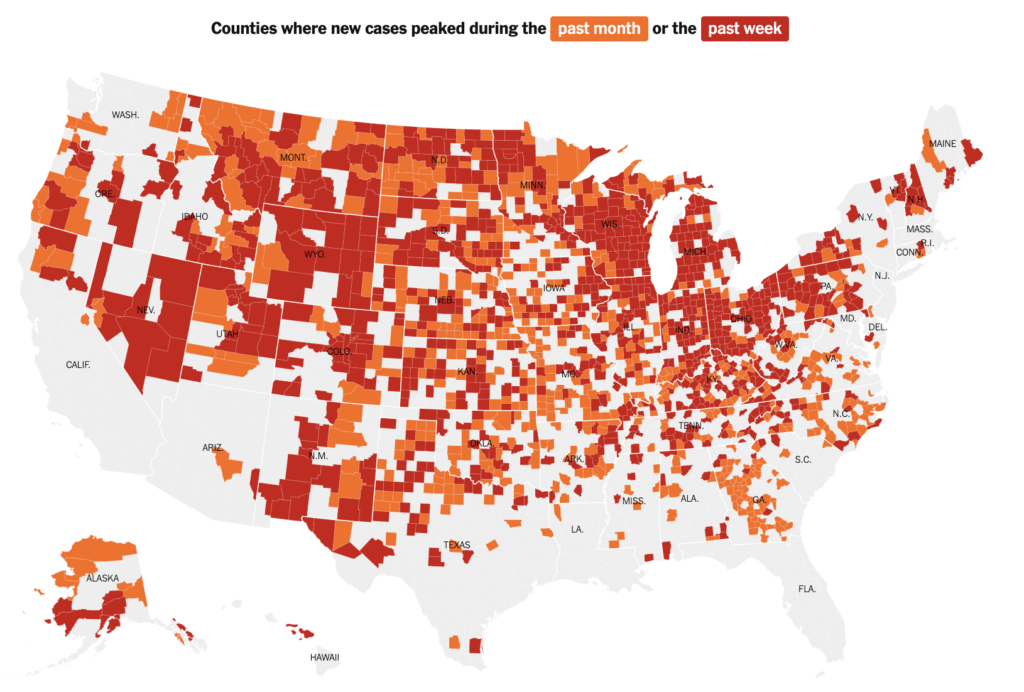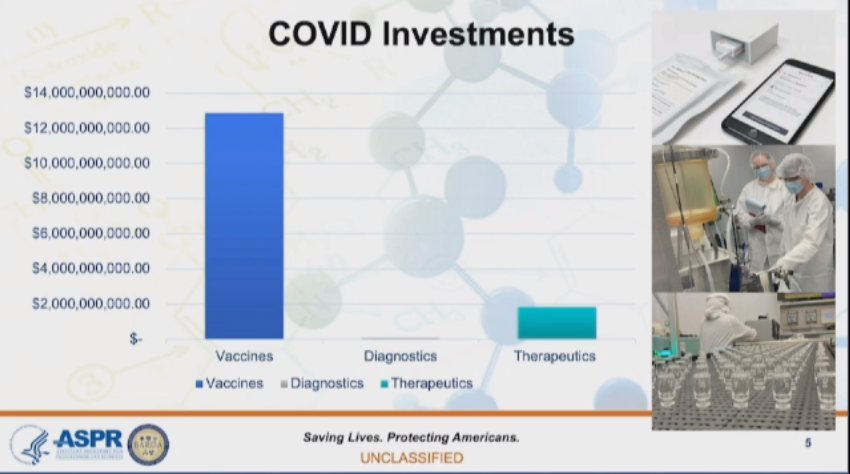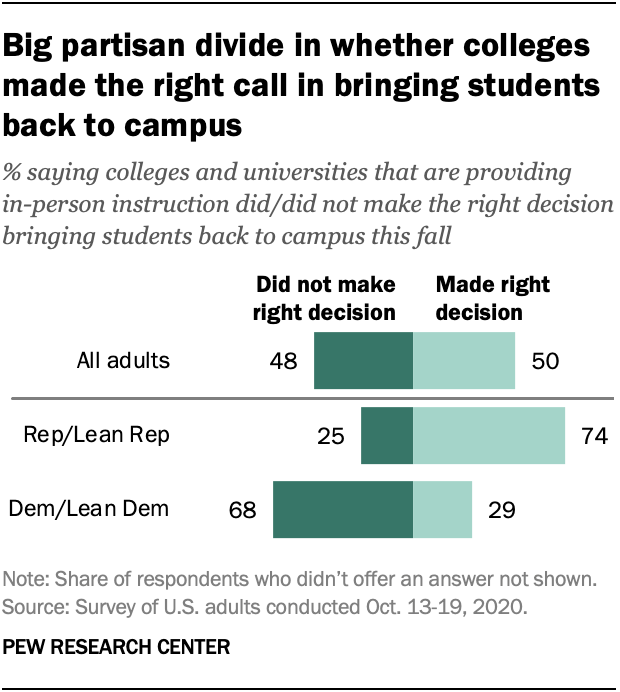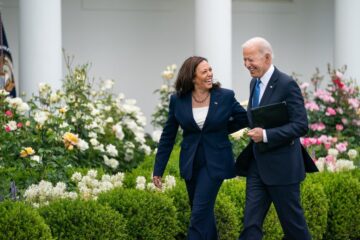Welcome back to Week 29 in my weekly reports analyzing the Covid-19 pandemic and its effects on the country and higher education, and welcome to our new subscribers! For those of you reading this on my blog, Off the Silk Road, I have also launched a newsletter, where these reports can be sent directly to your email each week. Click here to subscribe.
I have been following the pandemic since the first outbreak in Wuhan in January, during which time I was in China. As I have reported previously on this blog, I was in Beijing studying abroad when the coronavirus outbreak prompted our program to abruptly suspend operations and students had to quickly repatriate to the United States. Since the beginning of the outbreak, I have spoken to a number of media outlets to discuss the situation and my reporting.
Last week, we examined the alarming surge happening all throughout the country and discussed how college outbreaks can impact their surrounding communities. This week, in a special election issue, we will analyze what the American people can do to get the country out of the pandemic’s darkest days and how college students can stay safe returning home for Thanksgiving.
A national look
At the end of June, Dr. Anthony Fauci told a congressional committee that the U.S. could see 100,000 Covid-19 cases per day. On October 30, according to Johns Hopkins University, the U.S. recorded 99,321 cases and over half a million new cases in a week, a new record.
We knew this was coming. Scientists and doctors warned Americans of this fall surge. Fueled by a lack of leadership, pandemic fatigue and rampant misinformation and lies (we are not rounding the turn), we have come to face the reality that America is experiencing its darkest days of the pandemic yet. First, the cases. Then the hospitalizations. And finally the deaths. At our current trajectory, the IHME model from the University of Washington estimates over 2,000 Americans will die every day by January.
Here’s the good news. Through advances in patient care and treatments such as Dexamethasone, the U.S. has been able to bring the in-hospital death rate down dramatically. However, this is contingent upon having enough medical staff to provide the highest standard of care. With overloaded hospitals, it is likely that the death rate will increase.
In just two days, the American people will have the opportunity to make their voices heard at the polls in one of the most consequential elections in American history. Regardless of your political views, you cannot deny the fact that this president has consistently attacked public health and science. In just the past week:
- White House Chief of Staff Mark Meadows told CNN’s Jake Tapper that “we are not going to control the pandemic.” Former Baltimore health commissioner Dr. Leana Wen called this strategy “capitulation.”
- “Trump’s now back in charge. It’s not the doctors,” Jared Kushner said to Bob Woodward back in April.
- The president’s senior pandemic advisors have told The Daily Beast that the White House is in fact pushing a “herd immunity” strategy.
- Vice President Pence has been absent from pandemic calls for over a month.
- Dr. Deborah Birx emerged from a meeting at the White House one day in late summer with a new resolution: Never again would she sit in a meeting with Dr. Scott Atlas and listen to him pontificate on the pandemic.
- A federal agency scrapped a multimillion dollar ad campaign for a vaccine that would involve Santa Claus.
- The president has pushed a baseless conspiracy that greedy American doctors are overcounting coronavirus deaths in an attempt to make more money.
- NPR obtained documents that have been kept secret by the federal government showing key hospitalization trends and which hospitals around the country are at capacity. This graph shows hospital capacity in each state, based on the data that are publicly accessible through the Department of Health and Human Services.
The U.S. is in a pandemic spiral, and the American people have the opportunity to take the first steps toward change. “If he is reelected, he will continue on the same path, and so will the coronavirus. More Americans will be sickened, disabled, and killed,” The Atlantic’s Ed Yong writes. “Donald Trump is unchanging; the election offers an opportunity for the country to change instead.” As writer Garrett Graff notes, a possible transition period may not actually result in that much damage on the federal level when it comes to pandemic response. “As Meadows’ comment made clear, the sad truth is that the White House has been so disengaged from the pandemic response for so long that a total abdication of its role wouldn’t likely look all that different,” he writes.

It is not just the federal government. Many state governors, oftentimes Republican, have abdicated responsibility as their states have recorded the highest case counts yet. During a week of record hospitalizations in her state, South Dakota Governor Kristi Noem visited the president’s retreat at Mar-a-Lago. “What Gov. Mills gets right (and South Dakota’s governor gets wrong) is that fighting COVID is a matter not of limiting individual freedom, but a matter of social responsibility,” the editorial board of the Portland Press Herald in Maine wrote. Without an investment of testing at the federal or state level, there is no easy way out of this pandemic.

The president frequently claims that cases are up because of increased testing. This is just simply not true. From last month, testing is up 17% but cases are up 81%. Hospitalizations are up 51% and ICU admissions are up 81%. Deaths are up 42%, or as Donald Trump Jr. ignorantly and heartlessly says, “almost nothing.” You can browse each state’s data on this graph here.
The Atlantic’s COVID Tracking Project has illustrated the relationship of cases and testing in their own graph for all the states.

Let’s take a look at some of the latest scientific developments:
- A new study by Stanford economists found that 18 Trump rallies resulted in more 30,000 incremental confirmed cases of Covid-19 and more than 700 deaths, not necessarily among attendees.
- A seven-hour international flight to Ireland this summer has been linked to 59 coronavirus cases in the country, Irish researchers said in a report.
- An analysis by Massachusetts researchers found that Covid-19 has likely become the leading cause of death (surpassing unintentional overdoses) among young adults aged 25-44 in some areas of the United States during substantial outbreaks.
- A new preprint suggests that even outdoor gatherings in areas with low Covid-19 incidence are followed by increased infections, and that further precautions should be taken at such gatherings.
- A CDC report of an analysis of Covid-19 hospitalization data from 13 hospitals indicated that 6% of adults hospitalized with Covid-19 were healthcare providers. 36% were in nursing-related occupations, and 73% had obesity. Approximately 28% of these patients were admitted to an intensive care unit, 16% required invasive mechanical ventilation, and 4% died.
- A CDC investigation of 17 Covid-19 cases among a university’s men’s and women’s soccer teams identified numerous social gatherings as possible transmission events. Minimal mask use and social distancing resulted in rapid spread among students who live, practice, and socialize together.
- A shocking CDC report from a summer retreat in Wisconsin showed one student who received a negative test result <1 week before the retreat led to 116 (76%) diagnosed Covid-19 cases among attendees. Masks or social distancing were not required. This shows that testing before arrival is not a replacement for testing all on arrival.
- Experts have long stressed the importance of supportive isolation outside the home and a new CDC report supports this idea. Within a study of 191 enrolled household contacts, the secondary infection rate was 53%. The virus can spread rapidly in households and prompt isolation is necessary.
Finally, some updates on vaccines.
- “We all probably need to reset our expectations about how quickly we’re going to be able to be vaccinated,” STAT’s Helen Branswell writes.
- AstraZeneca’s vaccine has prompted an immune response among old as well as young adults.
- “This process will not be rushed. There will be no shortcuts in developing the relevant phase 3 efficacy results,” Dr. Peter Marks at the FDA writes in a USA Today op-ed. “Any vaccine showing efficacy must also be very safe.”
- State health officials are expressing frustration about a lack of federal financial support as they face orders to prepare to receive and distribute the first doses of a coronavirus vaccine.
As many countries in Europe experience powerful second waves and England enters into a second lockdown, the numbers out of the U.S. are dire. One American is diagnosed with Covid-19 every second and one dies every 107 seconds. As Dean of the Brown University School of Public Health Dr. Ashish Jha notes, there are three key ways large outbreaks slow:
- Behavior change: folks naturally start distancing, masking
- Policy change: bars close, mask mandates, etc.
- Population immunity: so many infected/immune that spread slows
The American people can rise to the challenge and strive for option 1, and state governments can enact strategic policies in option 2. Option 3 is simply unattainable. President Trump is asking for a red wave this Tuesday. It turns out he has already received one.
Let’s move on to our discussion of higher education.
Higher education
Each Friday, I update the College Watchlist, which is currently tracking 117,567 total cases at 95 colleges. At the top of my list of cases in the last 7 days are:
- Elon University – 266
- University of Illinois – 231
- University of Florida – 214
- University of Texas at El Paso – 199
- Ohio State University – 193
Although infections have declined precipitously from the initial shock associated with the return to campus in August, I am worried that we are seeing the beginning of spikes at many colleges. On average, case counts increased by 24% across the 95 colleges when comparing this week to last. This chart shows the increase in total case counts across all the colleges I am surveying.
In these weekly reports, we have long discussed that the national and higher ed pictures are closely intertwined. As we see cases rise nationally, I am worried about this possible line of transmission:
- Cases will rise in surrounding communities
- Covid-19 will be “supercharged” on college campuses through close contact
- College students will spread Covid-19 to the Thanksgiving table
This is certainly a possible scenario that could unfold in the next few weeks, and I encourage college students to practice vigilance.
Here’s a roundup of this week’s higher ed news:
- A new analysis published in STAT found that many of the outbreaks seen on college campuses started with cases that were imported from communities with high Covid-19 incidence and prevalence as students left those states and returned to campus.
- “You didn’t listen…Your mostly white and affluent administrative staff failed to address the disparities inherent in this pandemic and in your decision to reopen. And now you continue to pass the buck,” UNC staff write in a scathing report.
- As NPR’s Elissa Nadworny reports, wastewater testing is a promising way for colleges to detect possible Covid-19 infections before they appear in the college community and individuals begin showing symptoms. It does come at a small price.
- “You are ready to cast us aside once again in your quest to return to some semblance of normalcy,” a disabled student at Bowdoin College writes. “The disabled community needs you to stop partying and focus so we can get back to a decent livelihood and stop dying.”
- An outbreak a St. Michael’s College in Vermont has now swelled to 26 cases, with 137 contacts in quarantine. This shows outbreaks can happen anywhere, even in areas with low disease prevalence.
- Pandemic fatigue has set in among college students: “After so many months — like from March to June — of staying at home and not doing anything, it began to drive me crazy and I was willing to take the risk because I’m in good health, I live alone,” one Texas Tech student told The Texas Tribune.
- Some schools have started to look ahead to the spring semester; officials at Syracuse University have said coronavirus case numbers in New York State and Onondaga County may undermine their ability to reopen safely in January. The key to opening a college successfully has always been to drive down community transmission.
- All schools in the New York state university system (SUNY) will test all students before they leave for Thanksgiving. The University of Tennessee is encouraging, but not requiring, students to get tested before they leave.
- Views on whether colleges and universities made the right decision in bringing students back to campus are deeply divided along party lines, with Republicans and those who lean to the Republican Party more than twice as likely as Democrats and Democratic leaners to say bringing students back was the right decision, according to a new Pew poll.

It’s been a while since we’ve mentioned the RidicuList, the weekly set of wacky, strange and sometimes downright dumb elements of college reopening plans. This week:
- UNC-Pembroke Chancellor Robin Gary Cummings says his attending a rally for President Trump in Lumberton last week was “inconsistent” with how he has encouraged students, faculty and staff to behave during the Covid-19 pandemic.
- Princeton University is spending $80,000 on a ‘virtual’ lawn party and some students are not happy about it.
- President of the University of Wisconsin system Tommy Thompson recorded a video of him smashing a Covid-19 pumpkin.
All eyes will be on Thanksgiving, which is fast approaching. Massachusetts General Hospital’s Dr. Rochelle Walensky told The Washington Post, “People shouldn’t leave campus on Monday or Tuesday before Thanksgiving and think that they can safely dine with their family without having done any quarantine or testing before they left.”
These are a critical few weeks for colleges to keep infection rates down, as the mass dispersion of millions of students coming from potentially infected areas could be incredibly catastrophic to the nation.
The Good Stuff
Let’s roll the clips of the good stuff. In my usual tradition, I feature my favorite stories from the week. Here are my Top 11.
- One Twitter user’s child dressed up as Dr. Fauci for Halloween.
- The New York City theater group Improv Everywhere ran a hilarious skit of a socially distanced office in the middle of the East River.
- Yale virologist Dr. Akiko Iwasaki has shown she can fight back against a different kind of virus: sexism and power imbalances in science.
- Senator Kamala Harris has been using Howard University, her alma mater, as one of her campaign offices.
- Scientists have confirmed water on the moon.
- The University of Vermont has celebrated its 100,000th coronavirus test.
- The New Yorker has published an exclusive excerpt from President Barack Obama’s memoir in which he discusses his fight for equal healthcare under the Affordable Care Act.
- A new survey shows Americans are lying more about their social distancing behaviors to their family and friends.
- The demand for spices has soared as Americans cooking more amid shutdowns seek ways to liven up their meals.
- Taylor Swift has lent her song “Only the Young” to a new Biden ad encouraging young people to vote.
- Stressed about the election? The New York Times presents a set of quirky and relaxing anecdotes.
Conclusion
“We’re in for a whole lot of hurt. It’s not a good situation. All the stars are aligned in the wrong place as you go into the fall and winter season, with people congregating at home indoors. You could not possibly be positioned more poorly.”
These are words from a wide-ranging interview Dr. Fauci gave to The Washington Post late Friday night. Regardless of the outcome of this election, Americans should be prepared for weeks and months of pain as Covid-19 continues to ravage through the country. America is seeing a breakdown of contact tracing systems and in a short time could see hospitals overwhelmed and lives lost en masse. It is up to all of us to stop an American tragedy in its tracks. The American people will rise up to the challenge to defeat the virus at home, at work and at the ballot box.
Vote. The future of our lives is at stake.
I’ll be back next week with another edition with a likely focus on the election and the latest science news.
I’d like to thank all the student journalists with whom I have the pleasure of working. In the next weeks and months ahead, they will become vital in chronicling their colleges’ paths forward for the fall and beyond. Support their work by reading it.
My best to all for good health.
Like what you see? Don’t like what you see? Want to see more of something? Want to see less of something? Let me know in the comments. And don’t forget to subscribe to the weekly newsletter!
For more instant updates, follow me on Twitter @bhrenton.



1 Comment
Jack O · November 3, 2020 at 2:09 pm
Really appreciate these. Thorough, comprehensive, and clear.
Was wondering if you would consider at the end of the semester, year, or pandemic even, a comprehensive ranking of the most ridiculous of the RidicuList? Who breaks the top 10.0 in the collegiate mental gymnastics?
Keep up the good work.
Comments are closed.